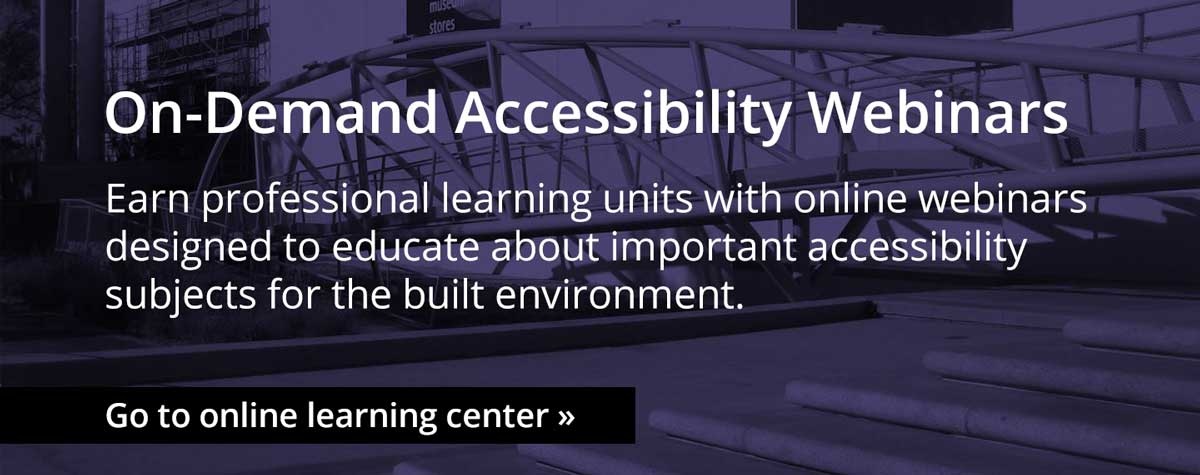Upcoming Events
Now Available: On-Demand Accessiblity Webinars
We are now offering on-demand accessibility webinars at our exclusive online learning center. Earn professional learning units with online webinars designed to educate about important accessibility subjects for the built environment.
Highly Recommend Kitchen Design for Access & Aging
“I highly recommend this presentation to designers, builders, and code enforcement professionals. Janis covers a broad range of accessibility and usability issues that affect kitchen design and construction. Most helpful are summaries of practical insights and the many illustrations and photographs included in this discussion of requirements applicable to kitchens in residential dwelling units with mobility features under the 2010 ADAS and 2019 CBC.”
— Glenn Dea, AIA, ADAC, CASp, Orange County, CA
8
Learn What You Can Do To Age In Your Home
6:00 PM
Organizer: Soroptimist
Venue: Cerritos Library- Skyline Room, 18025 Bloomfield Ave. Cerritos, CA 90703
14
Stepping Thru Accessible Public Multi-Family Residential Facilities
9:30 AM - 3:30 PM
Organizer: AIA - Los Angeles
Venue: 4450 W Adams Blvd, Los Angeles, CA 90016
IMPORTANT: You must be present for the entire seminar in order to receive AIA and California MCE credit.
ADA Seminar: Stepping Thru Accessible Public Multi-Family Residential Facilities
presented by Janis Kent, FAIA, CASp,
Stepping Thru Accessibility
Public multi-family residential facilities are quite complex with the differing regulations – we will explore which regulations apply along with requirements for kitchens, bathrooms, and social service center establishments
DESCRIPTION
An in-depth look at the differing regulations and code requirements for publicly supported multi-family residential facilities. We will review the various components found within dwelling units and social service center establishment sleeping accommodations, including kitchens and bathrooms. Multi-family residential is one of the more complex building types. Depending on when the facility was initially built and the type of funding, you can have a number of different regulations for one project such as the ADA Standards, the FHA, UFAS, and California Building Codes both 11A and 11B. We will also touch upon alterations and transition plans and how this impacts multi-family housing projects.
SUMMARY
Public multi-family residential facilities are quite complex with the differing regulations – we will explore which regulations apply along with requirements for kitchens, bathrooms, and social service center establishments
LEARNING OBJECTIVES
- Understand what is considered public multi-family residential and which regulations apply
- Review alteration and new construction requirements for dwelling units
- Learn about specific requirements for kitchens and bathrooms within dwelling units and common spaces
- Overview California senior housing and social service center establishment sleeping accommodation requirements
This seminar takes place IN PERSON on Friday November 14 from 9:30am to 3:30pm at the AIA|LA and ACLA Center for Communities Los Angeles, 4450 W Adams Blvd, Los Angeles 90016.
The training is five hours with an hour break. Lunch suggestions will be shared closer to the date.
Registrants will receive a PDF of the seminar notes to download or print in advance of the program.
REGISTRATION FEE:
AIA Members: $125 per person
Nonmembers: $195 per person

